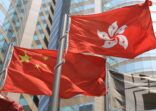The scheme, which would link the ETF markets of Hong Kong, Shanghai and Shenzhen, was initially scheduled to launch at the end of 2017. The launch is now expected to take place at the end of 2018, or in early 2019, according to Quah and other industry insiders.
Managers who have been preparing for the ETF Connect feel that the uncertainty about the launch date and the criteria for inclusion of ETFs in the cross-border scheme is hurting their business, according to Quah.
“It is not clear which types of exchange-traded products will be included, whether it will be confined to Hong Kong-domiciled funds, and what the requirement for AUM will be,” he said.
Instead of rolling out new ETFs, some issuers have decided to suspend new listings or even delist some of their products. In 2017, 35 cases of delisting were recorded, from 10 managers. China Universal Asset Management delisted all its ETFs in Hong Kong.
“It was a down year,” Quah said. “Many managers, including us, did not launch many products. We need to see if the products fit the ETF Connect eligibility criteria, otherwise the effort of launching them will be wasted.”
Quah expects that once the details for the scheme are announced, managers will be active again, launching products and attracting new subscriptions.
When in place, the scheme would allow mainland investors to trade ETFs listed on the Hong Kong Exchange, and Hong Kong investors to trade those listed in Shanghai and Shenzhen. It would add to the existing cross-border trading links: the Stock Connect, the Bond Connect and the Mutual Recognition of Funds.
“The combined AUM of Hong Kong, Shenzhen and Shanghai ETF markets actually surpasses that of Japan, after excluding the central bank’s holdings,” he said. “Apart from a sizeable market, the ETF trading is expected to become more active,” he added.
As of the end of 2017, Japan was Asia’s largest ETF market by AUM, 70% of which was bought through the asset-purchasing programme initiated by the central bank. Hong Kong and China ranked second and the third, according to Morningstar data.
Actively-managed ETFs
Actively-managed ETFs, for which the regulator has opened a three-month public consultation in December, can be another growth driver of the local ETF market in Hong Kong, according to Quah.
In addition to offering an additional investment option, the introduction of actively-managed ETFs would mean a wider distribution channel for the fund industry in Hong Kong.
“Today only passive products can be sold both through banks and on the exchange, while mutual funds are distributed only via banks’ platforms,” he said. “Despite the banks being supportive in selling mutual funds, their shelf space is quite limited,” he added.
Quah noted that if the actively-managed funds are listed on the bourse, active fund managers will be able to target retail investors more easily through brokerages.
Prior to allowing active ETFs, however, the regulator has to clarify the disclosure requirements for active managers, Quah stressed.
“If the channel requires full transparency on a daily basis, and the managers have to disclose all the holdings in the portfolio, they may not be very interested,” he explained. “A time lag [for disclosing fund facts] would be more acceptable.”

















